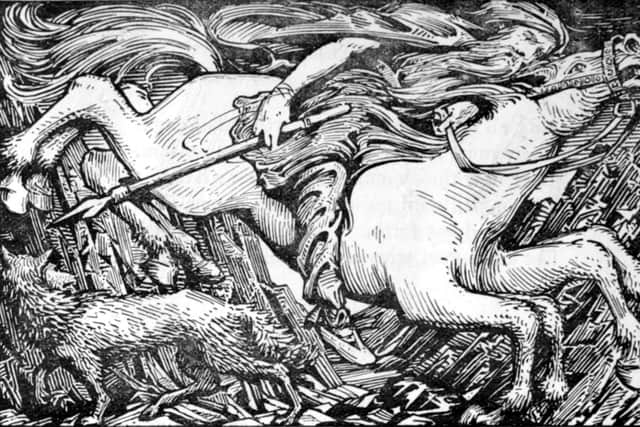Loki Season 2: is there much similarity between the character Loki and the Norse god he is based on?
This article contains affiliate links. We may earn a small commission on items purchased through this article, but that does not affect our editorial judgement.
and live on Freeview channel 276
The second season of ‘Loki’ begins today, with Tom Hiddleston’s beloved anti-hero set to be a pivotal link between the first series of the Marvel Cinematic Universe’s ‘Phase 5’ movies and their continuation as part of ‘The Multiverse Saga.’ But how akin is the character of Loki to his Norse god namesake?
A look across both how Loki is portrayed in the MCU and the mythology surrounding the Norse god of mischief reveals that, actually, it’s a pretty faithful adaptation and not just a ‘cool’ looking name for the Marvel character who first appeared in the comic book ‘Journey into Mystery’ issue #85, which was published in October 1962.
Advertisement
Hide AdAdvertisement
Hide AdIn Norse mythology, Loki was known to be a troublemaker (a villain if you will), who would change his appearance given one of his mythical powers was shapeshifting. Longtime viewers of the Marvel Cinematic Universe are already well versed in the character’s continual impersonations of other MCU heroes - in particular, his charade as Odin at the start of Taika Waititi’s ‘Thor: Rangarok.’
Very much in line with the Norse god too is how Loki in the cinematic universe might not be known for his feats of strength compared to his brother, Thor, but instead is known for his cunning trickery and being a skilled magician. Unlike Tom Hiddleston’s take on the character though, the Norse god didn’t find himself in quite the morally ambiguous situations.
In Norse mythology, Loki is associated with various symbols, including the serpent and the wolf, both of which have appeared in the MCU in connection with the character, and the writers have even got the complex relationship between Odin, Thor and Loki mythologically almost accurate - in Norse mythology, Loki was considered the step-brother to Odin, rather than the foster brother to Thor.
However, the events of ‘Thor: Ragnarok’ very much follow how the events transpired in Norse mythology, with a few key differences: in Baldr draumar, Odin has awoken a deceased völva in Hel, and questions her repeatedly about his son Baldr's bad dreams.
Advertisement
Hide AdAdvertisement
Hide Ad

Loki is mentioned in stanza 14, the final stanza of the poem, where the völva tells Odin to ride home, to be proud of himself, and that no one else will come to visit until "Loki is loose, escaped from his bonds" and the onset of Ragnarök.
Loki's actions and alliances during Ragnarok contributed to the cataclysmic events of the apocalypse. The world was consumed by fire and water, and many of the gods, giants, and other beings perished in the battle. This marked the end of the current world order.
Are the time loops in ‘Loki’ based on Norse mythology?
That is a very interesting theory and one that I subscribe to; in an academic piece titled ‘Loki, the Vätte, and the Ash Lad: A Study Combining Old Scandinavian and Late Material,’ by Eldar Heide, first published in 2011’s Viking and Medieval Scandinavia, the topic of where the name Loki originated was examined.
Heide wrote: "There is quite a bit of evidence that Loki in premodern society was thought to be the causer of knots/tangles/loops, or himself a knot/tangle/loop. Hence, it is natural that Loki is the inventor of the fishnet, which consists of loops and knots, and that the word loki (lokke, lokki, loke, luki) is a term for makers of cobwebs: spiders and the like."
Advertisement
Hide AdAdvertisement
Hide AdWe know that in the first season of ‘Loki’ the Time Variance Authority where unhappy that the character of Loki had used the Tesseract (the ‘time’ infinity gem) to go back to the point where he was arrested for his crimes in order to slip out (much like his mythological counterpart did prior to Ragnarok) which led to his arrest by the TVA and subsequent journey throughout the first season.
The reason for his arrest was that he caused a tangle of new timelines that all deviated from the one true “Sacred timeline” that the TVA are in charge of ensuring continues its correct path. So potentially, with Loki thought to be the causer of tangles and loops of string, the MCU team considered that into their multi-verse saga - meaning that potentially Loki has a bigger role in Phase 5 than maybe we’re giving him credit for.
Comment Guidelines
National World encourages reader discussion on our stories. User feedback, insights and back-and-forth exchanges add a rich layer of context to reporting. Please review our Community Guidelines before commenting.
